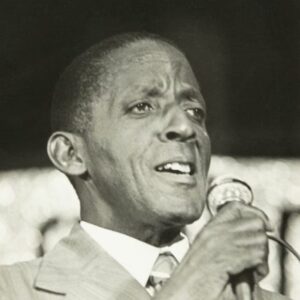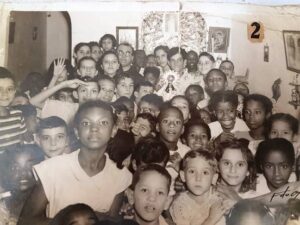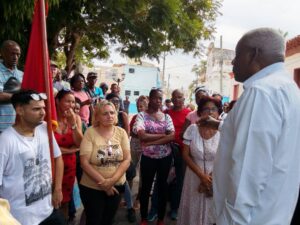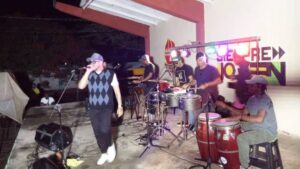The Voice of Danzón, a genuine representative of our cultural identity or simply Barbarito Diez.


In a central part of the territory of Bolondrón, a man was born who became a personality of Cuba and the world, thanks to his interpretative talents. With more than half a century of intense artistic career, Barbarito Diez Junco is one of the most significant artists of the national culture for all that he bequeathed to Cuban music.
When he was four years old, his family settled in the central Manatí, in Las Tunas. He made his debut in 1928 at the local cinema-theatre. Barbarito was neither a tailor nor a mechanic as his parents wished, but followed the paths of artistic creation. When he arrived in the capital, he made his way to survive the crisis in the country during the 1930s.
From his coincidence with Graciano Gómez and Isaac Oviedo in those years, Los Gracianos were born, a trio that drew on the most valiant of our traditions and incorporated the traditional trova and its range of habaneras, boleros, guarachas, sones and criollas.
Barbarito Diez performed in cabarets, theatres, dances, radio and television. His successes transcended geographical spaces and times. A tenor with ample vocal faculties, he had no academic musical training, he did not play any instrument, but his unequalled musical interpretations made him a public idol.
Known as La Voz del Danzón, the singer par excellence of Tres Lindas Cubanas and other Cuban anthological pages, he contributed measured and original energy to the dance and song form recognised as our national dance.
In 1935 he joined Antonio María Romeu’s orchestra as a soloist. He performed danzones, sones and boleros for more than five decades in this group that years later was called Orquesta de Barbarito Diez.
Without intending to, he weaved a musical legend without geographical or temporal limits. His voice immortalised musical pages such as Martha, by composer Moisés Simons, Lágrimas Negras, Olvido, Juramento, El que Siembra su Maíz by Miguel Matamoros, among others.
For his dedication to the development of national art, his fruitful work for the cultural enrichment of our people, Barbarito deserved several medals, orders and distinctions.
From soiree to soiree and from dance to dance throughout Cuba and Latin America Barbarito walked. He delighted several generations with works by Ernesto Lecuona, Eliseo Grenet, Pedro Flores, Rafael Hernández and other outstanding composers.
In 1987, he made his last performances in Mexico, Santo Domingo and Venezuela, where he became one of the most popular performers of the 1980s after recording with the string group La Rondalla Venezolana.
Every year in the province of Las Tunas, a festival is held in the name of Barbarito Diez. In honour of his memory, the municipality of Manatí built a monument in the José Martí Pérez park in that territory. In addition, his resting place became the Casa de la Música Barbarito Diez.
A large part of the vast discography that enriches the Cuban musical heritage belongs to him. On 6 May 1995, at the age of 86, the Caballero de la canción cubana, a genuine representative of our cultural identity, passed away.
Written by Jessica Mesa Duarte.




